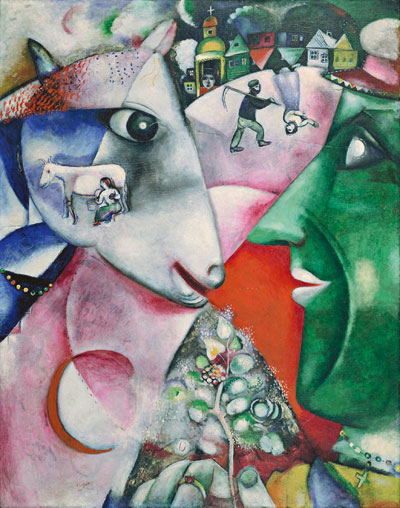‘When Matisse dies,’ declared Picasso, ‘Chagall will be the only painter left who understands what colour really is.’ Wandering around this splendid show you can see exactly what he meant. Chagall never used colour for cheap effect, but to convey meaning and emotion. The effect of seeing so many of his works together is almost overwhelming — a symphony hung upon a wall. But these aren’t the romantic paintings of Chagall’s later years, the visions of young lovers floating over seas of flowers. These are the urgent artworks of his youth, made at a time of immense upheaval. By focusing on these early years, to the virtual exclusion of his later work, this fascinating retrospective casts Marc Chagall in an entirely different light.
Chagall — Modern Master is both autobiography and travelogue, charting his apprenticeship in Paris, from 1911 to 1914, and his return to his native Russia, from 1914 to 1922. These were the years that made him, but the restless art he made as a young man was quite different from the serene dreamscapes of his dotage. Chagall was born in 1887 and lived until 1985, and his remarkable longevity has skewed his reputation. His mature work is sublime — full of tenderness and wisdom, but this exhibition shows that, had he died in 1922, he’d be remembered as a more dynamic, expressionistic figure, an artist more in tune with our own troubled times.
Paris was Chagall’s university, introducing him to old masters (in the Louvre) and to contemporary artists such as Robert Delaunay, with whom he formed a close and influential friendship. Yet while other painters submerged their talent in the various isms of the age, Chagall learnt from Cubism and Orphism without forsaking his own vision.








Comments
Join the debate for just £1 a month
Be part of the conversation with other Spectator readers by getting your first three months for £3.
UNLOCK ACCESS Just £1 a monthAlready a subscriber? Log in